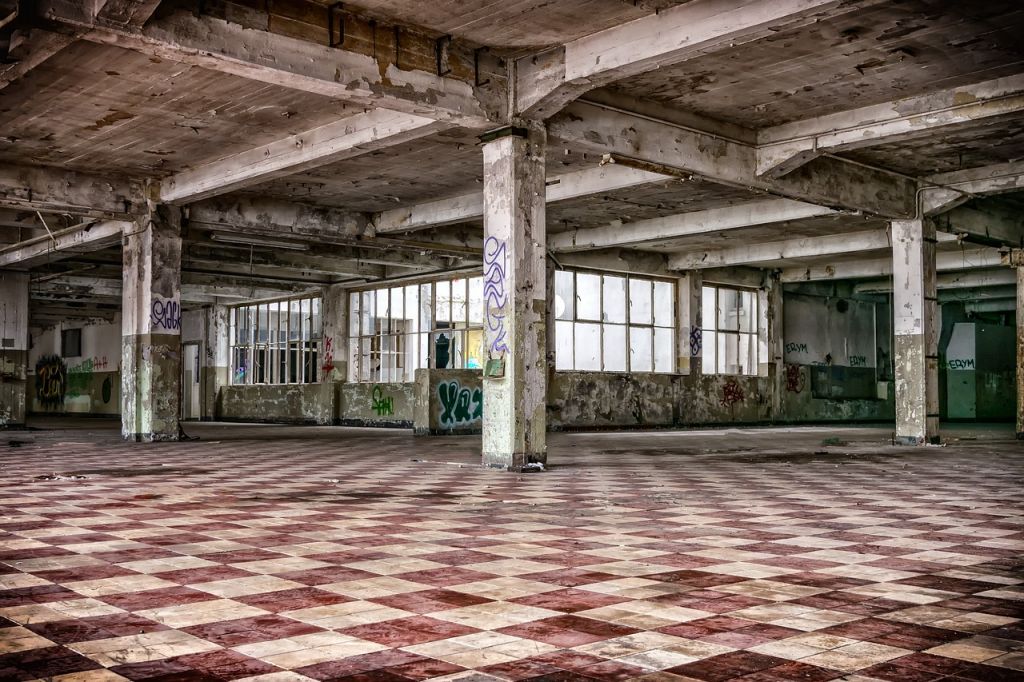REBEC 2023: Influence of Brownfield Investments on Real Estate Market – What Is Holding Investors Back and Why Are Old Buildings Throughout Serbia Falling Apart?
The investments in the real estate market are moving in two directions – towards the city periphery and undeveloped land on one hand and toward investing in old and underused complexes, which are mostly located in central city cores, on the other. Of course, these are greenfield and brownfield investments, which were discussed within REBEC 2023 conference.
Sava Centar is currently the biggest brownfield investment in Serbia, and Delta is very proud to add new value to that building, said Katarina Gajic, Director for Design and Construction at Delta Real Estate.
– Concretely, with Sava Centar, we have had trouble with the terminology and explaining what we would do there, what energy repair is, what adaptation is, reconstruction… The main challenge was to utilize the entire volume, spaces, corners, which have not been utilized in the right way in this monumental edifice. Sava Centar was built relatively fast, in three years, and they had plenty of challenges, and also, in all these years, many improvisations have been carried out, which have not been documented – she says.
It is precisely the lack of adequate historical documentation, as well as the lack of precision in the regulations that are the biggest challenges that investors face when it comes to brownfield investments, believes Katarina Gajic.
– That is why brownfield investments are most frequently handled by big local companies which can handle all those challenges – legal, technical… It is difficult for foreign investors to understand such problems – she points out.
Nemanja Ilic, the director of Marera Construction, a company which currently has several active brownfield investments, among them the Beogradjanka and BIGZ buildings, agrees that there is a problem with the paperwork and documentation in the brownfield sector.
– In the past, many things were done without the paperwork, or in line with the laws which were in place at the time, and which are now considerably different. For example, some buildings had been raised before the earthquake in Skopje, after which we adopted entirely new laws when it comes to stability and safety. In fact, the same regulations that apply to greenfield investments also apply to brownfield investments, we need to certify the buildings in the same way – Ilic says.
He points out that, for that reason, in brownfield investments, it is necessary to hire experts who examine the state of those buildings.
– We examine each item step by step and then we see where we are. And those are things you can expect in a brownfield investment. Like the Minesweeper video game – you open fields step by step and check whether there is a bomb there or not – explains Ilic.
Still, the investors find value in brownfield investments, and their biggest advantage, Ilic believes, is that they can be found in good locations, often in central city zones.
Such buildings in Serbia and Belgrade are often even older than those in Europe, so, he adds, the government should be interested in adopting a strategy of the reconstruction of those edifices.
Jovana Obradovic of the law office Prica & Partners Attorneys at Law, also believes that investments in brownfield locations need to be incorporated in our laws as well as possible. She adds that, on the state level, a register of brownfield locations should be established.
– There is no law in Serbia which defines brownfield investments in a single way. They can be facilities which have existed for years, or are under construction, in any case, they are facilities in which there have been no activities for a long time – Obradovic says.
She adds that the situation is clearer with greenfield investments.
– With greenfield investments, there is land and you check who owns it, you check the permits and potential limitations. For brownfield investments, the status of the facility and the land needs to be checked and the fact that the facilities were built before the current laws and that they are therefore now considered illegal needs to be taken into consideration. In addition to the new regulations on earthquakes, there’s also the surroundings, the energy efficiency… – she believes.
Still, she adds, although brownfield investments are “more complicated”, investors do find value in them.
– Otherwise, there would be no investments – Obradovic concludes.
What is important for the banks?
If there is an evaluation of the existing building and land, it’s a brownfield investment, and if it’s only land, it’s greenfield, explains Dragan Zivkovic, the technical consultant at Erste Bank AD.
– If we’re talking the crediting of greenfield investments, our client would have to be the owner of the land. In brownfield investments, we are not interested in the land, but in the business and the income. The checks can be more detailed for brownfield investments, because there are more technical risks there – Zivkovic says.
He points out that, for banks, however, the experience and the knowledge are the most important, as is having a stable company as a partner, on the other hand.
Sava Centar is currently the biggest brownfield investment in Serbia, and Delta is very proud to add new value to that building, said Katarina Gajic, Director for Design and Construction at Delta Real Estate.
– Concretely, with Sava Centar, we have had trouble with the terminology and explaining what we would do there, what energy repair is, what adaptation is, reconstruction… The main challenge was to utilize the entire volume, spaces, corners, which have not been utilized in the right way in this monumental edifice. Sava Centar was built relatively fast, in three years, and they had plenty of challenges, and also, in all these years, many improvisations have been carried out, which have not been documented – she says.
It is precisely the lack of adequate historical documentation, as well as the lack of precision in the regulations that are the biggest challenges that investors face when it comes to brownfield investments, believes Katarina Gajic.
– That is why brownfield investments are most frequently handled by big local companies which can handle all those challenges – legal, technical… It is difficult for foreign investors to understand such problems – she points out.
Nemanja Ilic, the director of Marera Construction, a company which currently has several active brownfield investments, among them the Beogradjanka and BIGZ buildings, agrees that there is a problem with the paperwork and documentation in the brownfield sector.
– In the past, many things were done without the paperwork, or in line with the laws which were in place at the time, and which are now considerably different. For example, some buildings had been raised before the earthquake in Skopje, after which we adopted entirely new laws when it comes to stability and safety. In fact, the same regulations that apply to greenfield investments also apply to brownfield investments, we need to certify the buildings in the same way – Ilic says.
He points out that, for that reason, in brownfield investments, it is necessary to hire experts who examine the state of those buildings.
– We examine each item step by step and then we see where we are. And those are things you can expect in a brownfield investment. Like the Minesweeper video game – you open fields step by step and check whether there is a bomb there or not – explains Ilic.
Still, the investors find value in brownfield investments, and their biggest advantage, Ilic believes, is that they can be found in good locations, often in central city zones.
Such buildings in Serbia and Belgrade are often even older than those in Europe, so, he adds, the government should be interested in adopting a strategy of the reconstruction of those edifices.
Jovana Obradovic of the law office Prica & Partners Attorneys at Law, also believes that investments in brownfield locations need to be incorporated in our laws as well as possible. She adds that, on the state level, a register of brownfield locations should be established.
– There is no law in Serbia which defines brownfield investments in a single way. They can be facilities which have existed for years, or are under construction, in any case, they are facilities in which there have been no activities for a long time – Obradovic says.
She adds that the situation is clearer with greenfield investments.
– With greenfield investments, there is land and you check who owns it, you check the permits and potential limitations. For brownfield investments, the status of the facility and the land needs to be checked and the fact that the facilities were built before the current laws and that they are therefore now considered illegal needs to be taken into consideration. In addition to the new regulations on earthquakes, there’s also the surroundings, the energy efficiency… – she believes.
Still, she adds, although brownfield investments are “more complicated”, investors do find value in them.
– Otherwise, there would be no investments – Obradovic concludes.
What is important for the banks?
If there is an evaluation of the existing building and land, it’s a brownfield investment, and if it’s only land, it’s greenfield, explains Dragan Zivkovic, the technical consultant at Erste Bank AD.
– If we’re talking the crediting of greenfield investments, our client would have to be the owner of the land. In brownfield investments, we are not interested in the land, but in the business and the income. The checks can be more detailed for brownfield investments, because there are more technical risks there – Zivkovic says.
He points out that, for banks, however, the experience and the knowledge are the most important, as is having a stable company as a partner, on the other hand.
I. Zikic
Companies:
Delta Real Estate d.o.o. Beograd
Marera Construction doo Kraljevo
Erste Bank a.d. Novi Sad
Prica & partneri Beograd
Tags:
Share:






Only logged-in users can comment.


 Izdanje Srbija
Izdanje Srbija Serbische Ausgabe
Serbische Ausgabe Izdanje BiH
Izdanje BiH Izdanje Crna Gora
Izdanje Crna Gora


 News
News









 LinkedIn
LinkedIn Copy link
Copy link


